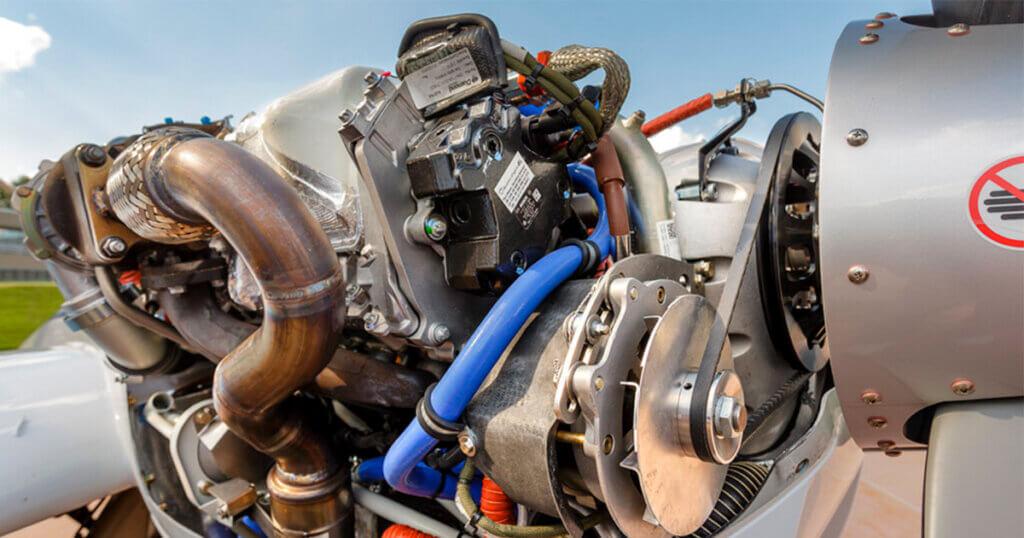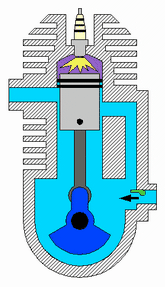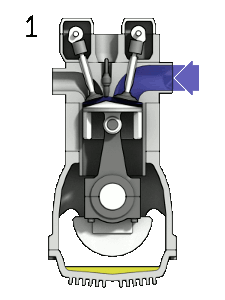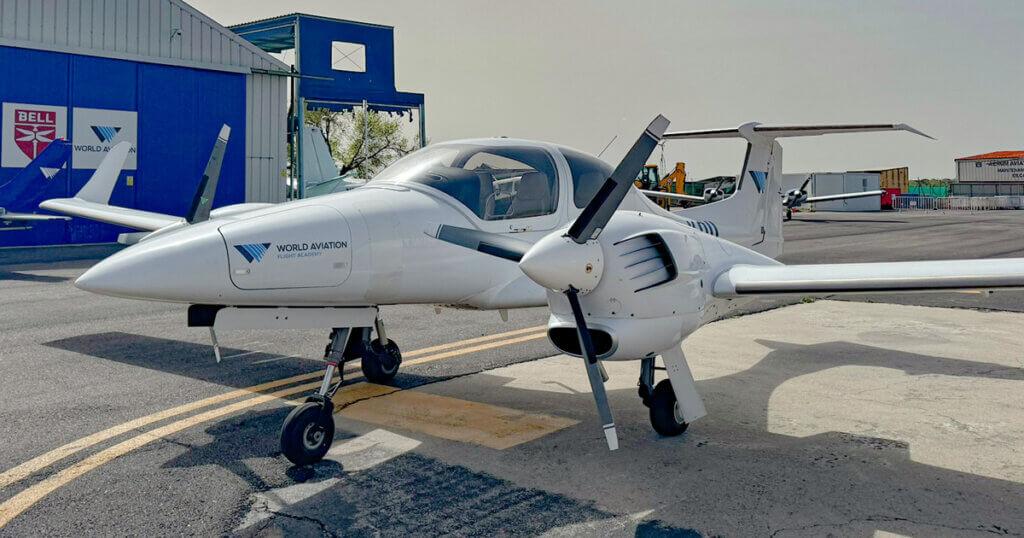- (+34) 913 09 43 73
- info@worldaviationato.com
- Mon - Fri: 9:00 - 20:00
Engines are a key piece for any aircraft as not only they generate the energy to keep it in the air but also their efficiency depends on them. This is why these kind of engines are under continuous investigation in order to find new types of fuel so as to achieve greater efficiency and reduce greenhouse gas emissions while cutting operating costs for companies.
The spark-ignition engine was designed on paper by French inventor Alphonse Beau de Rochas in 1862. However, it was not until 1876 that the German engineer Nikolaus Otto developed a four-stroke engine based on the model proposed by Beau de Rochas. From here, the internal combustion engine invented was called the “Otto cycle engine” and would be applied to the emerging aeronautics industry of the late 19th century.
In the four-stroke engine, the thermodynamic cycle is completed in four piston runs and two crankshaft turns, controlling load renewal by opening and closing the intake and exhaust valves.
Thus, the phases defined by Nikolaus Otto for the operation of an internal combustion engine with spark ignition are 4.
In the first phase of the four-stroke engine the inlet valve opens, the piston descent sucks the air-fuel mixture and gets it into the cylinder. In this first stage the crankshaft rotates 180º and the camshaft gives 90º, the intake valve is open and its stroke is descending.
After the first phase, the intake valve closes, the piston begins to rise producing a compression of air and fuel mixture. At the end of this phase the crankshaft will have made its first complete turn.
When the piston reaches the upper neutral point, the gas has reached maximum pressure and the spark is generated in the spark plug thus causing the mixture explosion. In this phase, the piston also moves downwards.
In this last phase, the piston reaches the lower neutral point and the exhaust valve opens. Now the piston will move upwards and the gases produced during combustion will be released.

After all this process, the crankshaft will have completed two full turns so the combustion cycle will be completed and will start again.
The Otto cycle offered several advantages over previous engines that used steam, external combustion or two-stroke cycles. First, it was more fuel efficient because it reduced heat loss and used the full expansion of the gas. Second, it was more reliable as it avoided condensation, corrosion and lubrication problems that affected steam engines. And third, it was more adaptable because it could work with different fuels such as gasoline, ethanol or natural gas, and could be expanded or reduced depending on its application.
Advantages of a 4-stroke engine
The main advantages of 4-stroke engines are the following:
Drawbacks of a 4-stroke engine
Without being inconvenients but rather characteristics of this type of engines, we may identify the following disadvantages:


In this case, the engine cycle is completed in two piston runs and one crankshaft turn.
Advantages of the 2-stroke engine:
Drawbacks of a 2-stroke engine
As with 4-stroke engines, here are a number of disadvantages that are characteristic of 2 stroke engines:
The internal combustion engine is one of the most influential inventions of the modern era as it gives power to automobiles, aircrafts, generators and many other machines in different applications.
During the 1930s, the internal combustion engine, or Otto engine, in its various forms (radial static and rotary, air-cooled and liquid-cooled) was the only type of powerplant available to aircraft designers. However, engineers began to understand that the piston engine was limited in terms of the maximum performance it could achieve since this was given by the efficiency of the propeller. It peaked when the blades’ tips approached the speed of sound. Therefore, if the intention was to increase the engine performance, and so of the aircraft, to overcome this barrier it was necessary to find a radically improved system of the piston engine design or develop a new type of powerplant. All this evolved to the jet engine.
Designed to meet strict safety and efficiency standards, aircraft engines today offer a perfect balance of power, endurance and economy. With constant advances in technology and design, engines used in commercial aviation have become cutting-edge engineering machines that drive global connectivity and make large-scale air travel possible.

Nowadays, the energy used in mobility accounts for more than 25 per cent of global supply. Worldwide oil demand is concentrated in the transport sector with more than 50% (World Energy Outlook, 2013), being the alternative internal combustion engine (World Energy Council, 2011) the most used propulsion system. The vast majority of related studies are focused on reducing fuel consumption and cutting pollutant emissions (U.S Departament of Energy).
Within the 17 Sustainable Development Goals established by the United Nations in 2015 for the 2030 Agenda, SDG 7 is about partnerships to eradicate pollution from fossil fuels and address the ineffectiveness of governments to implement clean and renewable energy. Access to modern and sustainable energy sources is essential not only for approaching the climate change but also for countries’ economic growth.
At present, the Otto cycle remains as the dominant mode of operation for most internal combustion engines, especially for petrol vehicles. However, it faces an increasing competition and pressure from new technologies such as electric motors, hybrid systems, fuel cells and hydrogen engines that offer potential benefits with less emissions, higher efficiency, lower noise and greater sustainability.
The invention of the Otto cycle did not bring a fixed and definitive solution but was a starting point for further development and mobility improvement.
Since the Otto cycle came to light, different variations have been created to approach the challenges and optimize the performance of internal combustion engines.
For example, the Atkinson cycle uses a longer expansion stroke than that of the compression run to increase efficiency and reduce emissions. Or the Miller cycle, which uses a supercharger or turbocharger to increase the intake pressure and reduce the compression stroke thus avoiding bumps. On the other hand, the Diesel cycle uses a higher compression ratio without spark plug to ignite the fuel-air mixture only by heat, what results in higher efficiency and lower emissions. Finally, we find the HCCI cycle that combines characteristics of the Otto and Diesel cycles to achieve a homogeneous compression ignition, a mode of combustion that reduces shocks and emissions.
The future of the Otto cycle will depend on how well it adapts and integrates with new technologies as well as on its ability to meet the changing demands and expectations of consumers, international regulations, and society.
You will be up to date with the news at World Aviation Group.